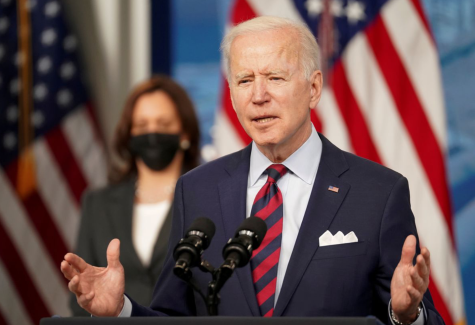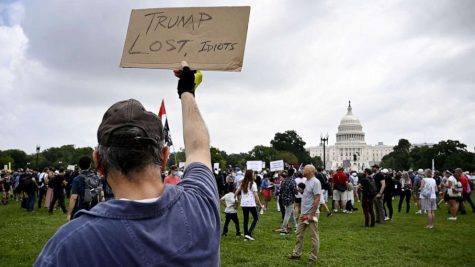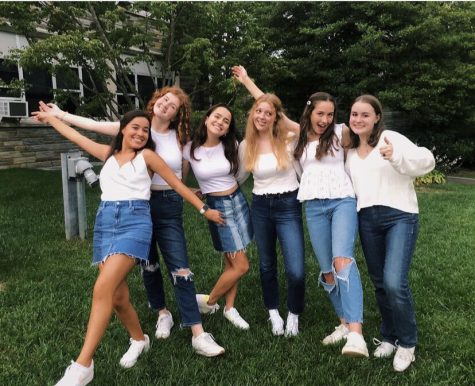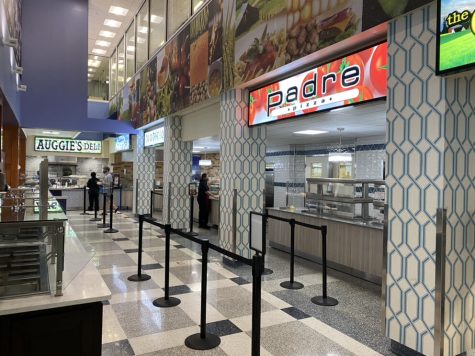Students Explore Creative Solutions to Issues of Poverty Using Blockchain Technology
December 3, 2019
Villanova University hosted an ‘Idea Hackathon’ November 15 — 17, bringing together interdisciplinary teams of students from across the University’s schools and colleges to examine poverty as a global epidemic and develop design solutions using blockchain technology to tackle the issue. Student projects explored a range of ideas, from solutions to feed the poor, to others focused on building credit and streamlining government programs.
“Our students truly accomplished what we wanted: a set of highly varied and well investigated ideas applying blockchain to alleviate poverty,” Hasshi Sudler, adjunct professor at Villanova’s College of Engineering who has expertise in blockchain technology and cyber security, said. “Teams approached the problem from every conceivable angle — from personal healthcare to personal credit ratings, and from local solutions in Philadelphia to global solutions tracking donations to the developing nations.”
At the end of the three-day idea hackathon—which included students from engineering, business, liberal arts and sciences, nursing and law—organizers announced the winners of the event.
First place ($4,000) was awarded to Daniel Kelchner, Roshitha Vallurupalli, Shay Dineen and Subash Nepal. They used Trustcoin to build individuals’ credit scores in order to gain credit, which can reduce poverty overtime while augmenting existing credit score systems such as Fico. Trustcoin could be used as a form of down-payment on a loan, to increase Trustcoin scores by passing financial literacy tests and for paying debts on time via micro lending. It would offer real-time information for lenders to monitor and better manage their credit risk.
Second place ($2,000) was awarded to Scott Hutt, Mary Kate O’Connell, Mohammed Abaas and Ian MacPherson. They used blockchain with a mobile app to track project statuses and milestones of a government aid program, and to monitor cash flows to eliminate corruption and inefficiency with a goal to create transparent, quantifiable and sustainable policies to lift the economy and reduce poverty.
Third place ($1,000) was awarded to Stephany Annor, Sarah Baranik and Sean Brandon who used blockchain to help a consumer going to one government aid agency to have their request shared with other local and national government agencies that focus on housing, food, education, disability, and unemployment, connecting social services umbrellas. This would save both the recipient and agencies time and money and cuts the ‘red tape’ to gain social services both locally and nationally.
Honorable mention went to Stephanie Frank, Rahul Thapa and Steven Guachichullca who created a coin to place a value on a meal prepared by a college dining service. Unused meals can be donated by students to a nonprofit that can then distribute the unused food to those in poverty using a blockchain transaction record system.
Other teams focused on a variety of topics. One team looked to help ex-convicts reenter the workforce by using blockchain’s public access and verification of education, vocational skills and prison employment history. This idea, created by William Collins, Sophia (Xin) Tong and Nathaniel Crary, would also allow tax credit for employers.
Another team, led by Diego Alarcon, Shenda Huang and Ann Riddle, aimed to increase employment agency effectiveness and skills training, where a person’s educational key performance indicator is tracked by smart contracts to earn badges that can be seen by prospective employers. Badges would help them receive better jobs, and employers would receive better trained workers.
David Pejovic, Veronica Gedal and Alexis Price looked to use the Elevatr grant program for the working poor to use blockchain to ‘buy out’ work time in order to increase education or skills with the extra time. This would allow them to get paid to increase their education form donations to a nonprofit that effectively runs the blockchain.
Shelby Gallen, Sydney Karpowich and Shiyu (Jenny) Su used the EnRich program that allows younger students to earn tokens as rewards for academic accomplishments to be spent within one year in a specific geographic region. This spending would spur increased human capital and economic activity in impoverished areas and could also be used to earn academic credit.
Gabriel Ahern, Toyin Omodara and Xingjian Wang focused on Nutri-coin to incentivize healthy eating and protect hackers from stealing health data. Poor health and poverty are proved to be highly correlated. This coin works with Supplemental Nutrition Assistance Program to verify healthy food purchases and provides valuable open access info to SNAP program managers to reduce fraud using the SNAP card and money. Buying healthy food would help them receive discounts and other incentives, and administrators could see hot spots of unhealthy eating by geographic area.











